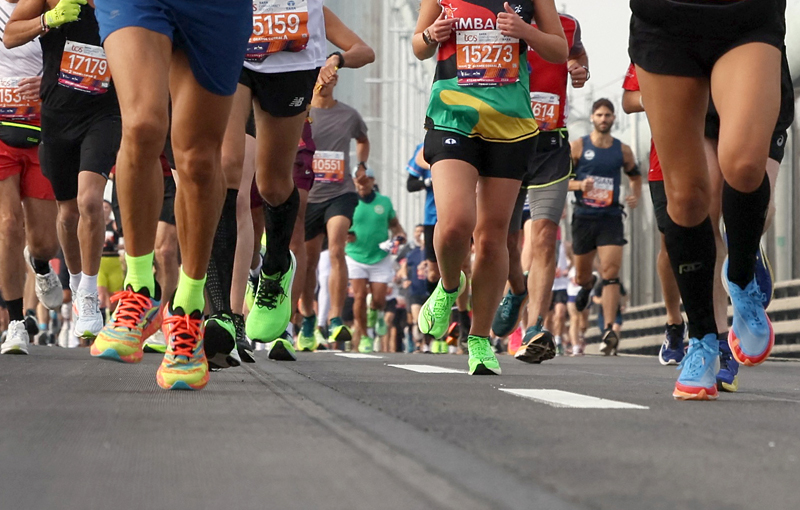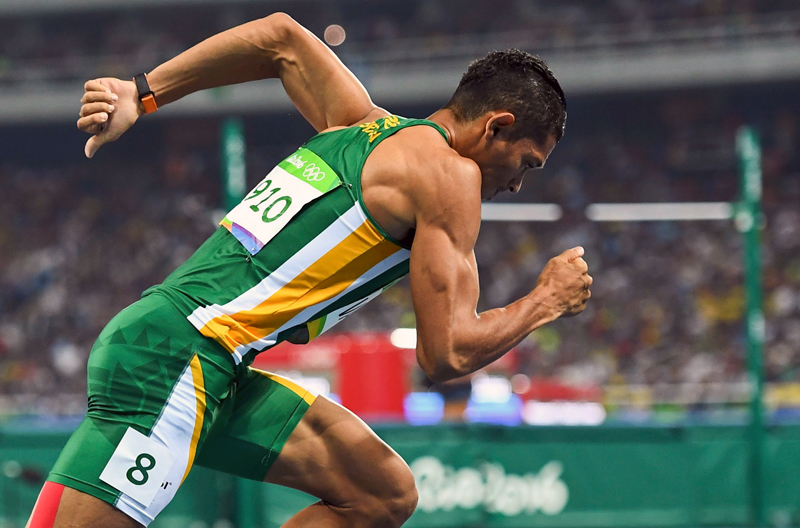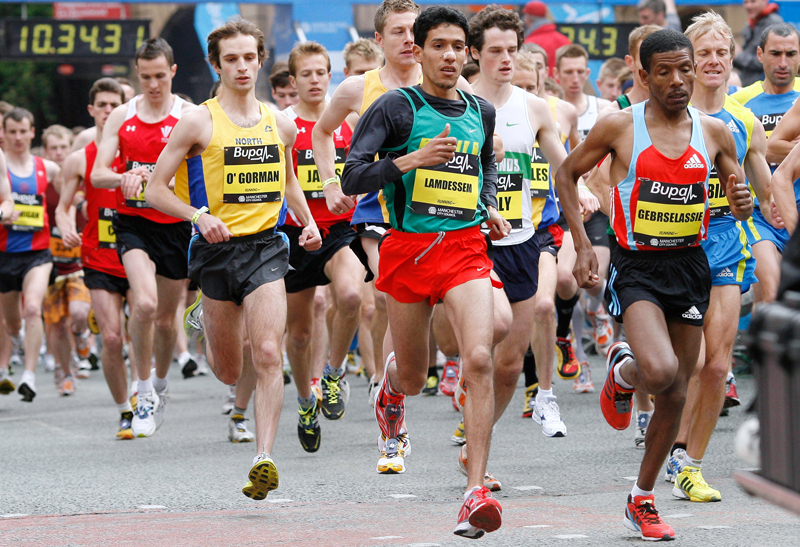The weighted sled provides a number of training opportunities to develop numerous facets of fitness. It is versatile enough to develop anaerobic and aerobic fitness and is therefore a suitable means of training for many athletes.
Benefits of sled training
- Provides variety
Training in the gym to develop strength and power can become boring, so getting outside with the sled can provide a stimulating work out. - Develops aerobic capacity for heavier athletes
Larger athletes, such as shot putters, American footballers and rugby forwards, can develop aerobic fitness through low intensity (in terms of the resistance carried on the sled), walking drills performed with the sled, such as the sled pull with triceps curls (as shown in the video). - Develops anaerobic power
The sprint sled pull is the obvious sled application for developing dynamic power and speed and, in particular,
acceleration.
Note: the weight used on the sled should be relatively light, if increased sprint acceleration is your goal, as too heavier a load will compromise effective sprint acceleration technique and therefore compromise training transference. Other dynamic moves can be performed with the sled, with heavy sled loading and powerful actions over relatively short distances of 10-20m. - Increase muscle size (hypertrophy)
With heavy weights (that would induce fatigue after pulling and completing the relevant exercises on the sled over reps of 10-15m) muscular growth can be stimulated.
Again, this can make for a great alternative to indoor weight training. Due to the potential for dynamic movement with the sled as well, these work outs will release high levels of the androgen (growth hormones) – testosterone and growth hormone, thus promoting muscle growth. - Pre-condition against injury
Sled work outs are also great for strengthening muscles to withstand the rigours of more intense work outs – this is known as pre-conditioning or pre-training. The power walk will pre-condition the legs and back, for example, before more explosive running work outs are tackled. - Develops functional strength
Sled work involves numerous muscles and joints over functional movements.
The arm and legs work together to coordinate movement,
and core activation is integral to stabilise the body as the limbs exert force on the sled and training surface.
How to get or make your own sled
Sleds can either be purchased from a specialist strength and conditioning supplier (search the web), or you could even have one made by contacting your local metal worker. If you choose the latter option, sleds are no more complicated than a plate with a weight holder welded into its centre and an upturned front end to push away any debris that may be accumulated as the sled is pulled.Non-elastic straps can be obtained from a climbing shop for pulling movements – and, as you’ll also see in the video, a weights belt can also be used to secure the sled via the straps to your waist so that you can perform dynamic exercises, such as the sprint sled pull.
Sled work-out tips
1) Pull the sled across a smooth surface, such as a running track, or Astro Turf or dry flat grass (not a cricket pitch!!).2) Always underestimate what you think that you can achieve at first when working with sleds (as with all new-to-you exercise modes). Practise the movements with the sled
un-weighted, before you pile on the plates.
3) As with all exercise programmes, there is no single golden work out that will perform miracles. All work outs will be effective, providing you adhere to the basic training principles of progressive overload, recovery, duration, specificity and frequency.
Video contents
Introduction to sled work outs – Patrick Dale (Solar Fitness)Exercises:
1) Sled pull with biceps curl
2) Sled pull with triceps exercises
3) Sled power walk
4) Sprint and sled pull
5) Power walk with sled pull










